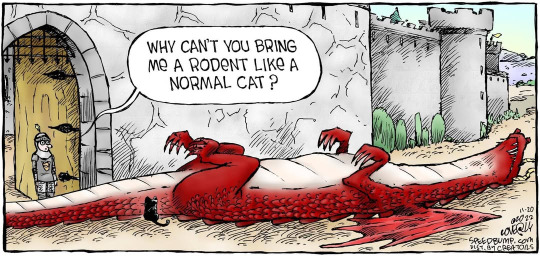Text

When it was discovered that Zalim (ironically meaning, cruel) was in the company of two very young cubs, those at Ranthambore feared the worst: that, as an adult male, he would kill them. Instead, he surprised naturalists with his “motherly” behavior when he took in his twin daughters following the death of their mother.
At this time, science stated that tigers were only as social as mothers and cubs could go and that tiger fathers rarely interacted with their offspring. Zalim changed that when he was witnessed, month after month, caring for his daughters and teaching them how to hunt. Their relationship eventually ceased when the two girls were shifted to Sariska Tiger Reserve and Zalim went on to father another litter with the then-dominant tigress Sundari, the so-called Lady of the Lakes. When she too mysteriously disappeared, Zalim unsurprisingly took care of their cubs as well.
Ranthambore National Park, India Photograph taken via camera trap
8K notes
·
View notes
Text
Oh my gosh. I just found this website that walks you though creating a believable society. It breaks each facet down into individual questions and makes it so simple! It seems really helpful for worldbuilding!
131K notes
·
View notes
Video
My friend claimed he could play Flight of the Bumblebee and accompany himself. Then he did this.
590K notes
·
View notes
Text




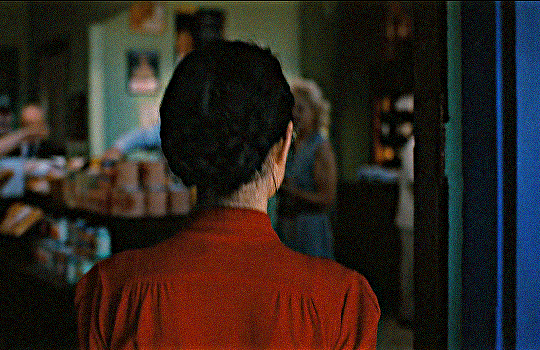




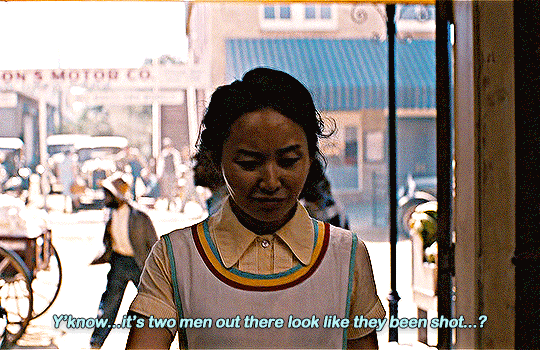
#and that's how you do a character introduction Bonus:
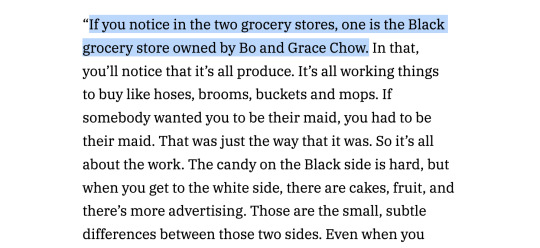

xx / xx
1K notes
·
View notes
Text
Daniel de Visé’s ‘The Blues Brothers’

I'm in the home stretch of my 20+ city book tour for my new novel PICKS AND SHOVELS. Catch me at the TUALATIN public library TOMORROW (June 22). After that, it's LONDON (July 1) with TRASHFUTURE'S RILEY QUINN and then a big finish in MANCHESTER on July 2.

I picked up Daniel de Visé's The Blues Brothers: An Epic Friendship, the Rise of Improv, and the Making of an American Film Classic at LA's Diesel Books; it was on the receiving table I sat next to as I signed books after a book-tour reading, and I snuck peeks at the back cover while I chatted with the long line of attendees:
https://danieldevise.com/product/the-blues-brothers-an-epic-friendship-the-rise-of-improv-and-the-making-of-an-american-film-classic
By the time the line was cleared, there was no question that I was going to buy this book, even though it wasn't formally for sale for a couple days (the bookstore staff were kind enough to make an exception for me, not least because I promised them that I wouldn't get a chance to read it for quite some time as I flitted from city to city on the rest of the tour).
Like many people of my generation, I grew up with The Blues Brothers. I taped the movie off of TV when I was about 14 and literally wore the tape out in the next four years, re-watching and re-re-watching the movies on that tape – Animal House, The Blues Brothers and Spinal Tap – so many times that I can still just about recite those movies verbatim, more than 30 years later.
The Blues Brothers is sunk so deep into my psyche that I don't know that I ever questioned why they were so embedded in my outlook. I don't know if I can even tell you when I first saw the movie. Certainly, my friend-group was very into the movie, and my best friend and I went as Jake and Elwood on multiple Hallowe'ens at the Rocky Horror Picture Show at Toronto's Roxy Theatre, until it became such a cliche for us that we felt the need to mix it up and dress up at zombie Jake and Elwood.
But beyond the movie, I was taken with the Blues Brothers' music. I didn't know much about blues, boogie woogie and other roots music before the Blues Brothers came into my life. The combination of the Blues Brothers movie and its sound-track sent me on a treasure hunt for music by the band, its musical guests, and the artists whose song they covered. By the time I was 20, I'd amassed a vast collection of used records, tapes and CDs featuring Cab Calloway, Ray Charles, John Lee Hooker, Aretha Franklin, Willy Mabon, The Chips, Floyd Dixon and more. Soon, I was leaping from one artist to others. I found an incredible Pop Staples/Steve Cropper/Albert King collaboration "Jammed Together":
https://www.youtube.com/watch?v=8Sarzs8VRSg
Within a few hops, I'd found my way to Sonny Terry and Brownie McGhee and thence to the immortal James Cotton:
https://www.youtube.com/watch?v=kl4IcMlrJwM
I started skipping Rocky Horror to see the house band at Chicago's on Queen Street, and from there found my way to the weekend jams at Grossman's:
https://torontobluessociety.com/venue/grossmans-tavern-2/
It's not an overstatement to say that The Blues Brothers altered my life, changing the music I listened to and the way I understood the musical ancestry of everything that went into my ears. Indeed, the effects that The Blues Brothers had on my life are so pervasive that I effectively stopped noticing them. When I put on a Memphis Slim album, it doesn't occur to me that the reason that music is on my hard-drive has something to do with that worn-out VHS cassette in my parents' living room in the 1980s.
Standing there at the counter at Diesel Books for an hour, sneaking peeks at the back cover of de Visé's book, set me to considering exactly how this weird and remarkable phenomenon came to be. I knew a little, of course – my friends and I used to trade the information that Aykroyd came from a family of famous Ontario Tories the same way we would have gossiped had his father been a famous serial-killer. And no one could escape some of the more salacious details of Belushi's death, though I absorbed most of what I knew via one of the greatest short stories I've ever read, Bradley Denton's "Calvin Coolidge Home for Dead Comedians," about Belushi and Lenny Bruce leading a revolt in Comedian Hell:
https://en.wikipedia.org/wiki/The_Calvin_Coolidge_Home_for_Dead_Comedians
So I bought a copy off the receiving table, straight out of the warehouse box, and I've finally gotten around to reading it, and holy moly is it fascinating! I confess that in the months since I brought the book home and stuck it on the TBR shelf, I'd mostly forgotten why I'd picked it up and had started to view it as a book full of production trivia, and when I picked it up this week, it was with an eye to skimming it quickly before putting it out at the curb in my Little Free Library. Instead, I found myself utterly engrossed in a brilliantly told, brilliantly researched tale that left me with a much deeper understanding of – and appreciation for – the cultural phenomenon that I was (and am) swept up in.
De Visé devotes the first third of the book to snappy, revealing biographies of Belushi and Aykroyd, who grew up in very different milieux, and were of very different temperaments, but who both found their way into comedy just as the tradition of Borscht Belt comics and variety shows were giving way to a younger, weirder kind of comedy, a mixture of Monty Python, National Lampoon and improv.
These biographical sketches are short, but they don't shy away from nuance – Belushi's parents, for example, are simultaneously painted as loving and also reckless and self-involved. De Visé gives the lion's share of attention to Belushi, but he doesn't stint on detail about Aykroyd, strongly implying that "Danny" is on the spectrum, with a deep collection of "special interests" and a deep discomfort with eye contact that accounts for habit of wearing sunglasses.
As the two men find their way into various pioneering comedy projects – Second City, National Lampoon radio shows – they start to inch towards Lorne Michaels, and thus to each other. As de Visé painstakingly traces the ups and downs of their comedy careers, he paints a vivid picture of the wild swings of talented, striving artists at the start of their careers. By the time we get to the SNL chapters, the show itself becomes the star, and its rocky early days strongly echo the struggles of the comedians we've followed to its stage.
The actual production story of The Blues Brothers movie doesn't start until more than halfway through the narrative. By that time, we've been set up with the way that filmmaking, comedy, popular culture, and politics have all changed to make The Blues Brothers movie a possibility. De Visé shows us how Belushi had won over a long list of household names in the entertainment industry, and how Aykroyd's meticulous, obsessive nature honed and directed Belushi's wild talent.
The actual production of, and reception to, The Blues Brothers movie arrives in the book as a kind of extended climax and denouement, and yes, there are tons of funny bits of production trivia and gossip in this section. From winning over the mayor of Chicago (who reversed a decades-long policy of all-but-total prohibitions on filming permits in the city) to dropping a Ford Pinto thousands of feet, to the garage where, every night, dozens of surplus police cars that had been crashed that day were refurbished and gotten into shape to be crashed again the next day.
And while all of this is going on, de Visé gives us a vivid portrayal of Belushi's spiraling addiction, the disease that is killing him right there, in front of everyone who loves him. That story carries over into the film's aftermath, as it is laboriously cut from more than three hours (it was originally intended to be shown with an intermission!) and released to hostile critics and an adoring public.
These are the final days of Belushi, something we all know and can see coming. But even as Belushi approaches his final days, we learn how The Blues Brothers movie had created a legacy. It was Aykroyd who got Belushi into the blues, and the schtick they did about wanting to preserve this music from a world that was set to bury it and forget it wasn't just for the movie.
Aykroyd and Belushi wanted to bring the music back. They couldn't stand that the likes of Cab Calloway, Aretha Franklin, Ray Charles and James Brown were playing county fairs and half-full night clubs. They wanted the music to escape from history and live again. And they succeeded. In a "where are they now" coda straight out of the closing credits of Animal House, de Visé documents how the artists featured in the movie – and the musical traditions they represented – experienced a massive revival following the film's release, which the musicians themselves credit to the movie.
Which is where I came in, I suppose. That's how I got here, in this form, with a hard drive full of R&B, blues, country swing, jazz, boogie woogie and jump blues that vie with Talking Heads for play in my shuffle.
This isn't a book about a movie; it's a rich and engrossing tale of an extraordinary creative collaboration that found an unlikely foothold at just the right time and place. It's a sensitive, funny, and revealing account of Belushi, Aykroyd, and the comedians, impresarios and friends in their orbit. Even if you didn't wear out a VHS cassette and memorize the whole damned movie, you will find something surprising and delightful in these pages.
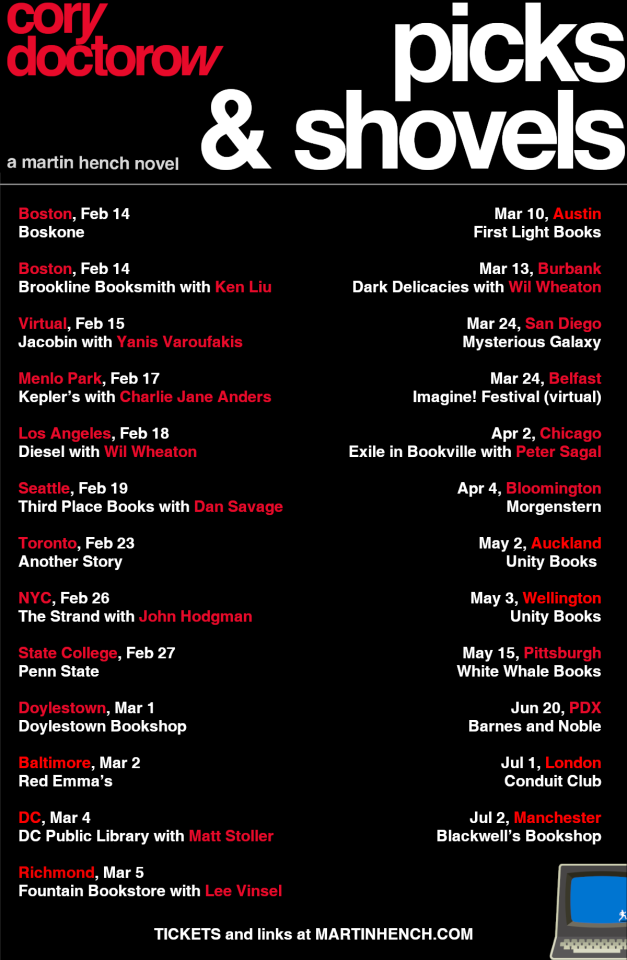
If you'd like an essay-formatted version of this post to read or share, here's a link to it on pluralistic.net, my surveillance-free, ad-free, tracker-free blog:
https://pluralistic.net/2025/06/21/1060-west-addison#the-new-oldsmobiles-are-in-early-this-year
233 notes
·
View notes
Text


PROPAGANDA
Getwin Mittlemind:
A rare Mad social scientist. has also made himself heavily cybernetic, including a memory backup so he can be revived if killed, which he has done many times.
Dr Carmilla:
K so I dnt remember if she has an actual doctorate but if she did it would be revoked very fast She’s an immortal space vampire lesbian who after some toxic yuri created her children to also be immortal after they died (no they’re not actually related but I doubt that matters much) and then made them a part of her band She was thrown out of an airlock by one of her children and iirc she just fucked off never to be seen again until she is alluded to in The Ignominious Demise Of Dr. Pritchard but e never outright saying she’s there so there’s a bit of fan interpretation when it comes to it She also after leaving the mechs starts a different band but alas no one really talks about that one Timelines when it comes to the mechs are messy and so are they and so is Carmilla and she deserves to w
140 notes
·
View notes
Text
After seeing the Howl’s Moving Castle musical I am a changed person and I never want to see fanart of Sophie Hatter as thin and white ever again.
If you weren’t aware that there was a Howl’s Musical, here ya go. Go throw money at this production company and hope they release an album or a recording because the show was honestly fucking perfect. We were in the front row and all five of us flailed so hard that the cast thanked us specifically “for our enthusiasm and energy” after the show.
This Sophie, played by Seattle actress Sara Porkalob, is your new god.
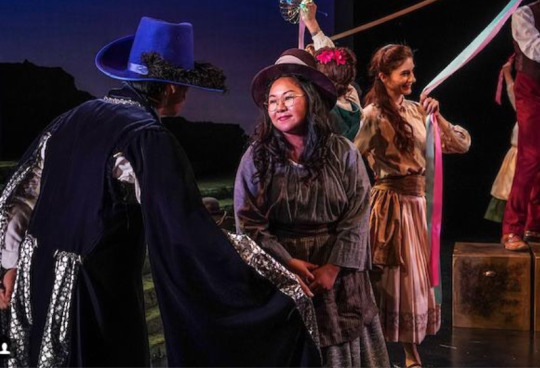
She has micro-expressions down to an absolute art and the best comedic timing I’ve ever personally witnessed. She exists and was the perfect Sophie and now you know. You’re welcome.

Sidenote but the night we saw it Howl was wearing a NEON PINK WIG and SPRAY PAINTED SILVER JEANS for almost the entire show and NO ONE will ever be a better Howl tbh.

And Lettie and Martha were also great! The entire cast was great! Their physicality on stage was unbelievable!! The writing was superb!!! I can never see another musical as long as I live because of how perfect this one was!!!!!


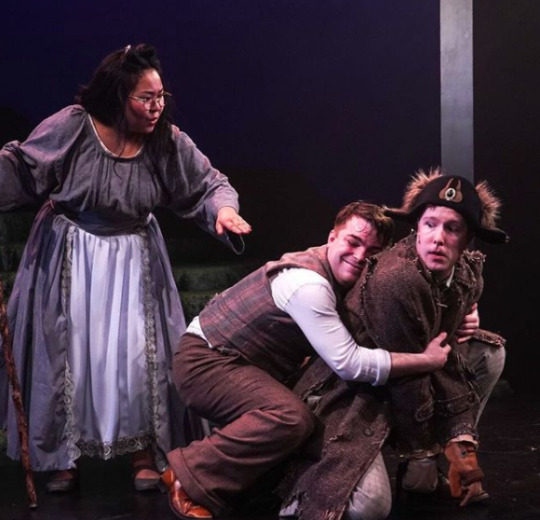
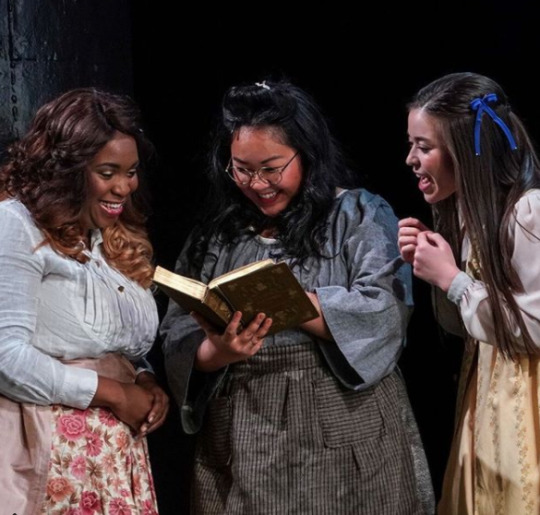

You’re welcome.
22K notes
·
View notes
Text
Literal definition of spyware:
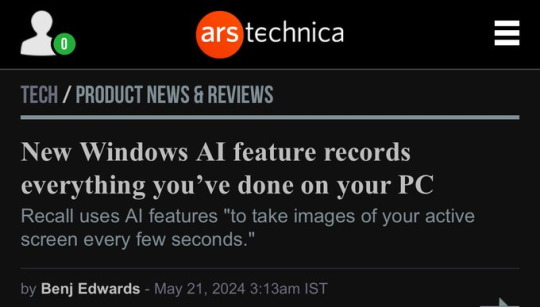
Also From Microsoft’s own FAQ: "Note that Recall does not perform content moderation. It will not hide information such as passwords or financial account numbers. 🤡

249K notes
·
View notes
Text
I can't do much but maybe this will interest someone. This cookbook is by a classically trained autistic chef, made for people with sensory issues. It's sold 1/6th of its initial run because apparently no one wants to have an autistic person interviewed on TV.
Apparently it's also very funny.
Spread this around! I bet someone here can use this.
25K notes
·
View notes
Text
8K notes
·
View notes
Text
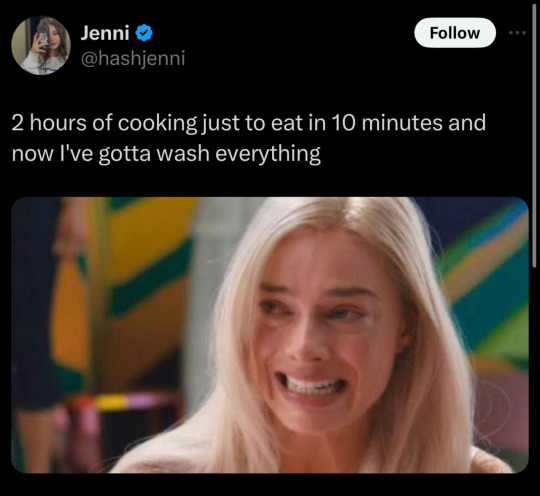
i had to make a solution for this for myself, mostly because of depression, but it makes a nice How To for folks who are low on spoons or could use some help in the kitchen.
Fortunately i was a professional cook for over a decade. UNfortunately the first post i made explaining it was suuuuper long. Let's see if i can do better
So you select any protein that you can cook in a frying pan -- chicken breasts, ground beef, pork chops, sausages, steak, chicken thighs, whatever. You also select one or two types of veggie (mushrooms or tubers also work, i just did this with potatoes and carrots for dinner tonight).
[i like cooking for vegetarians, but this is how i cook for myself when i'm low on spoons - perhaps i'll do another post for meatless meals]
You'll also need some kind of oil, and a sauce or two of your choice in a bottle. All cooking gear is a large frying pan with lid (i prefer non-stick) a spatula, a cutting board, and a knife.
You cut the veggies into bite size pieces, cut up enough for two meals. One kind of veggie is fine, or you can do mix two or three
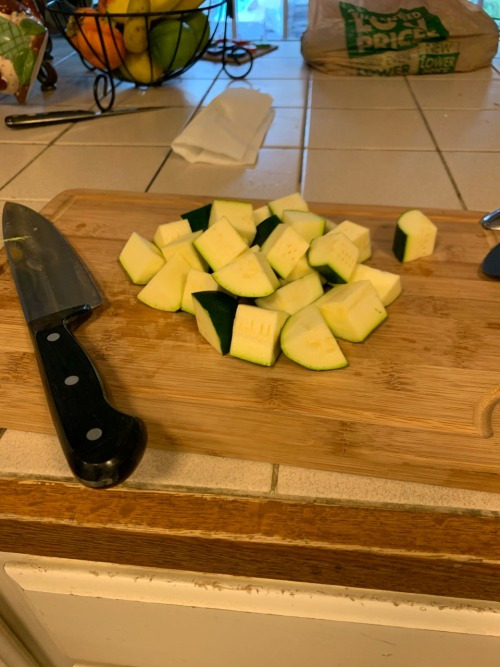
Put frying pan on medium heat with a little oil. Tubers or mushrooms or go in the pan a few minutes before the protein. 2 portions of the protein goes in the pan, about 5 minutes with lid (don't worry you can still get a good sear on both sides)

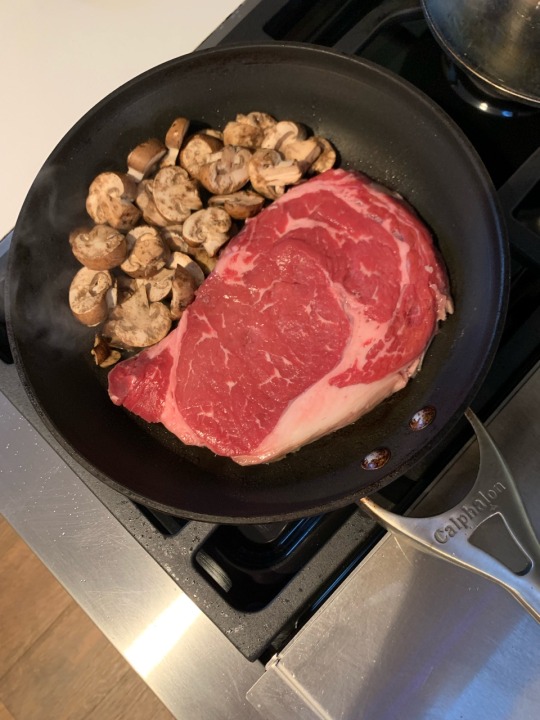
Now flip your protein if it's flip-able and add normal veggies, put the lid back on another five-ish minutes.

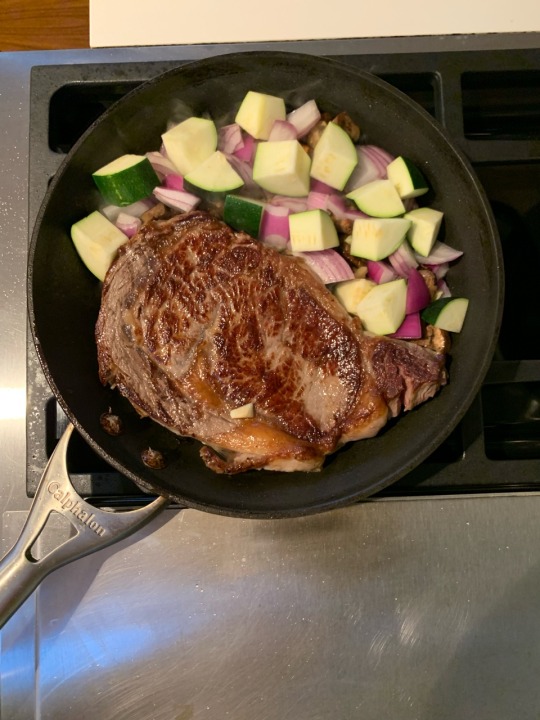
Take your protein out and put it with one portion of the veggies in a microwave safe container. That's going to be your lunch tomorrow. Put the other portion of protein on a plate to rest (you have to let a cooked protein sit a couple minutes before you serve it or when you cut into it all the juices run out and it goes dry - the liquids thicken as it cools, preventing this drying out if you let it rest, the goal is to serve it very warm but not hot hot)
While it's resting, pour some sauce from your bottle in the pan with the rest of the veggies and turn up the heat. A single sauce/bottle is fine, i like to get fancy and mix a couple. Two examples of personal favorite mixes are 1: bbq sauce and a hot sauce like sriracha 2: roughly equal parts low sodium soy sauce and worcestershire (makes something similar to a teriyaki sauce) A swallow of wine is almost always a great option if you want to add that to your sauce too, just add it to the pan before the other sauces so the alcohol has time to burn off.
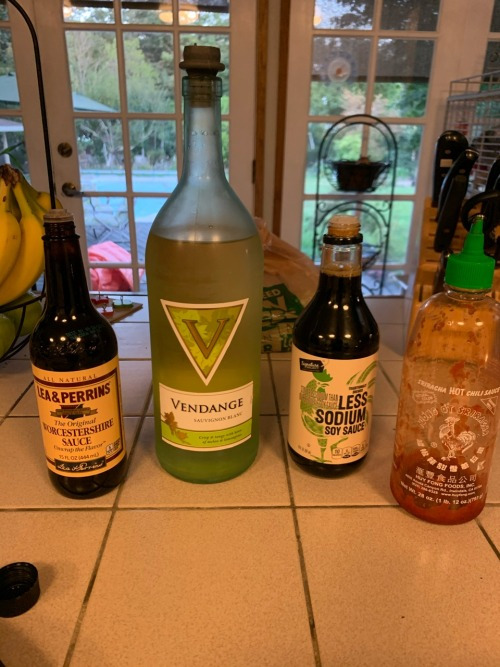
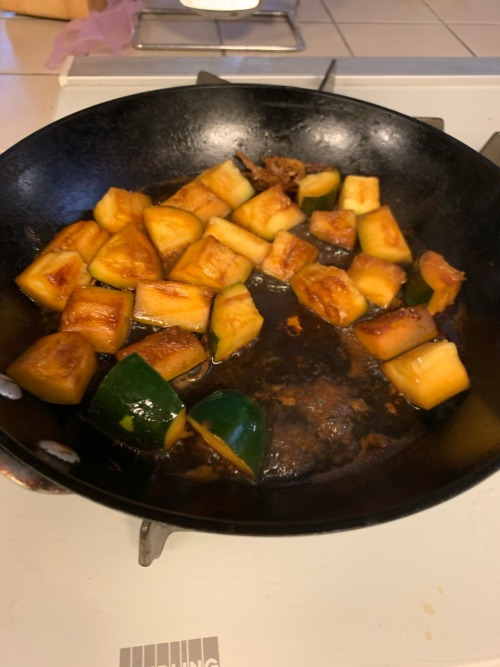
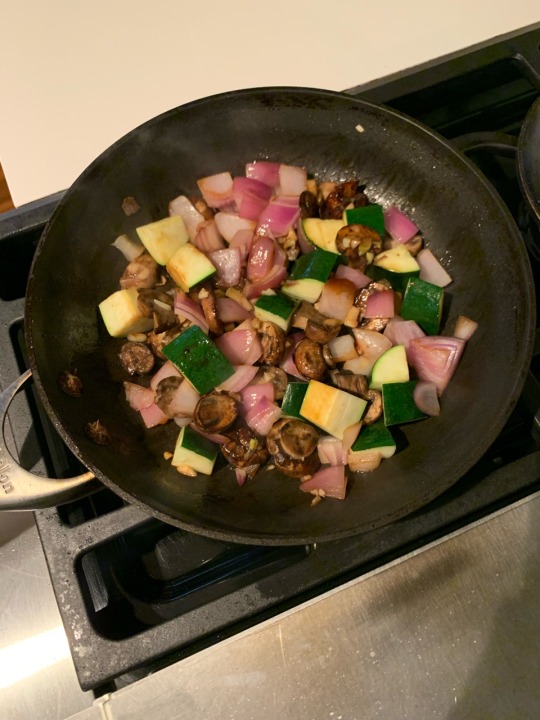
...
Here is the important bit. While your veggies are finishing, wash your cutting board and chef knife. Then when you dump your veggies and sauce over your protein on the plate, while it is still too hot to eat, you wash your frying pan and spatula before you eat. Now the only dishes you have left to do are your plate and fork. Maybe a steak knife.
...
The whole thing takes about 35 minutes even with washing the dishes, and that includes your lunch for the next day- just pour a different sauce on and stick it in the microwave for a couple minutes (or five minutes back in the frying pan) and you have a full healthy lunch with a different flavor
You can use this technique every single meal and it yields hundreds of combinations, from pork and potatoes bbq, to salmon and broccoli teriyaki, to chicken and zucchini in a soy glaze.
It will keep you down to less than an hour of kitchen time per day total for both lunch and dinner including all dish clean up, uses the least dishes, the least effort, requires the least technique, and is, depending on what you pick out, very affordable
here are a couple more examples from this month; i didn’t take pictures of the salmon i did recently, but you get the idea
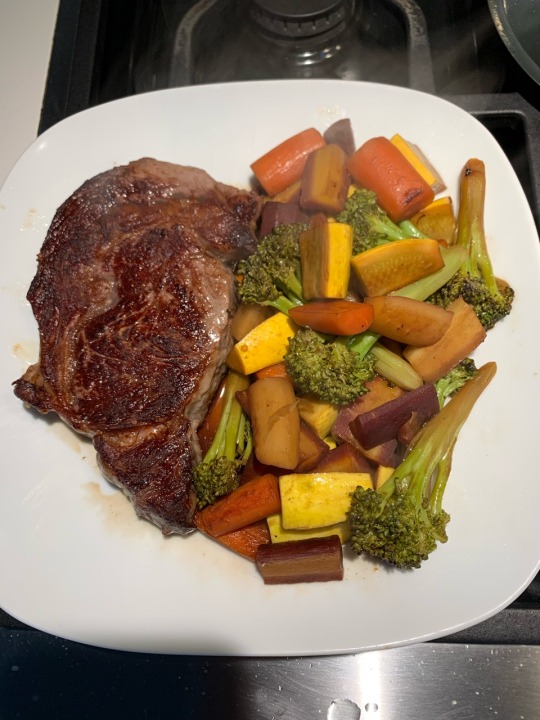
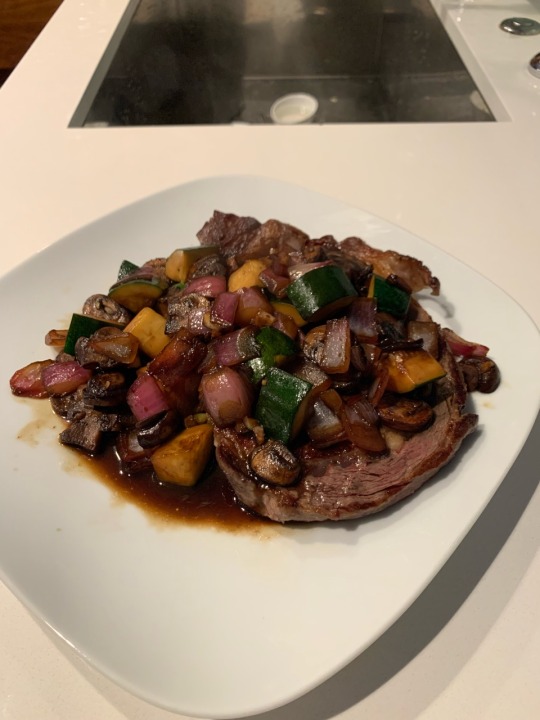
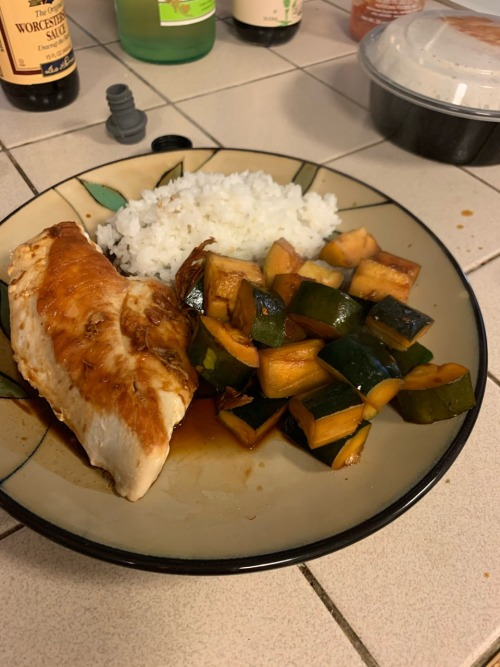
it's not super fancy, but it is easy, affordable, quick, and any flavors you want. Hope this helps some folks
Happy Cooking!
27K notes
·
View notes
Text
This scientist crafts stunning visual art through chemistry.
22K notes
·
View notes
Text
I wish Americans fucked with more foreign music. You don’t have to know the language to appreciate a good record. Folks in other countries listen to our music and don’t speak a lick of english. Music needs no translator
239K notes
·
View notes












